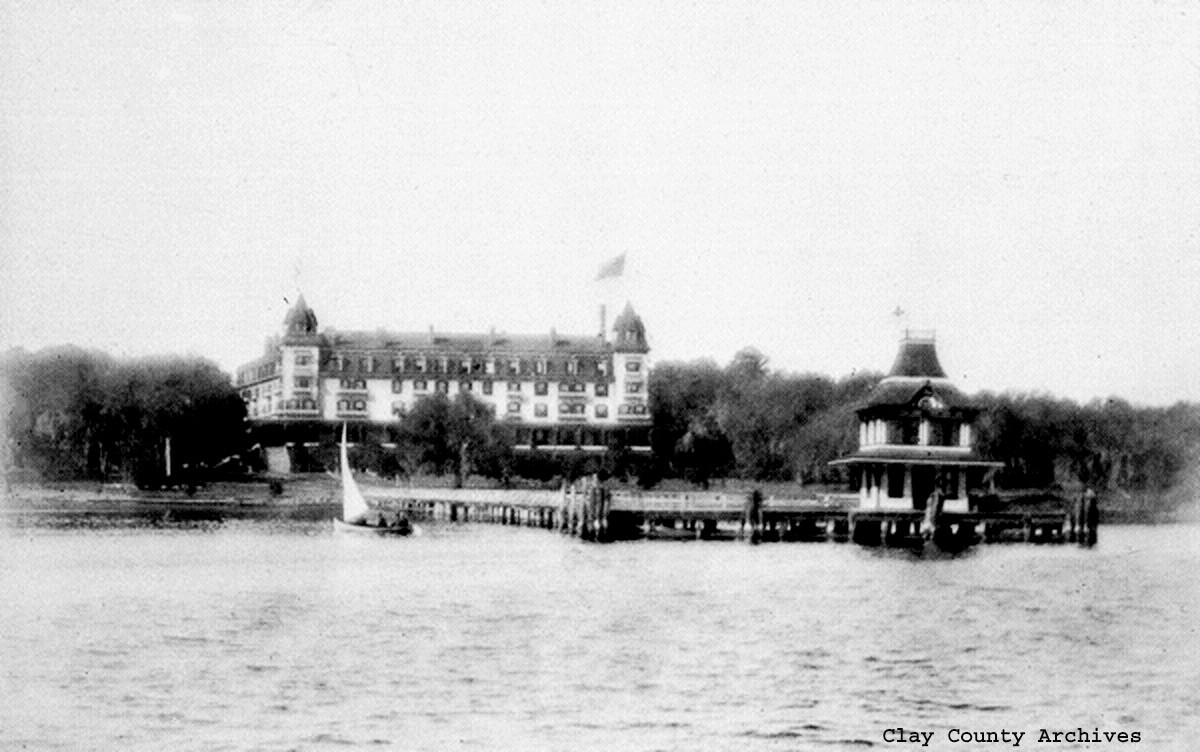Clay County Memories 9/1/16
The third Magnolia Springs Hotel, Queen of Clay County’s tourist hotels
In 1881, Boston hotelier, Isaac Cruft, welcomed guests to his newly-built and posh Magnolia Springs resort hotel on the west bank of the St. Johns River just north of Governors Creek.
For almost …
This item is available in full to subscribers.
Attention subscribers
To continue reading, you will need to either log in to your subscriber account, or purchase a new subscription.
If you are a current print subscriber, you can set up a free website account and connect your subscription to it by clicking here.
If you are a digital subscriber with an active, online-only subscription then you already have an account here. Just reset your password if you've not yet logged in to your account on this new site.
Otherwise, click here to view your options for subscribing.
Please log in to continueDon't have an ID?Print subscribersIf you're a print subscriber, but do not yet have an online account, click here to create one. Non-subscribersClick here to see your options for subscribing. Single day passYou also have the option of purchasing 24 hours of access, for $1.00. Click here to purchase a single day pass. |
Clay County Memories 9/1/16
The third Magnolia Springs Hotel, Queen of Clay County’s tourist hotels
In 1881, Boston hotelier, Isaac Cruft, welcomed guests to his newly-built and posh Magnolia Springs resort hotel on the west bank of the St. Johns River just north of Governors Creek.
For almost three decades Florida tourists, invalids and investors came and filled her 200-plus rooms, suites and five privately-owned three-story cottages to capacity of more than 800 during the peak of the winter season.
Croft designed his complex to provide a successful balance of pampered luxury and exotic adventure. Magnolia Springs offered something for everyone and every age.
Some guests were delivered to the site by riverboat after a breathtaking trip along the St. Johns River from Jacksonville. Others arrived by train and traversed the golf course by mule-powered tram to the hotel.
Each new group of arrivals at the end of the 600-foot hotel pier was greeted by the resident brass band and took refreshments in the two-story, pagoda styled party house.
Guests arriving by train were served spring water and champagne at the gothic inspired train station that also served as the golf course clubhouse. After imbibing, the guests with their copious baggage of steamer trunks and carpet bags, were transported to the hotel in a mule drawn tram.
The main building encompassed more than 60,000 square feet. The first floor provided a billiard room, storage, mechanical space and sleeping rooms for the hotel staff. The second story held offices, parlors and reading and writing rooms. The well-appointed dining room with its multitude of mirrors, stained glass windows and ornate furnishings was also on this floor offering a spectacular view of the river.
Communication throughout the enclave was provided by wire. Guests in far-flung areas could summon staff, relay a request to the kitchen or laundry, arrange an excursion to hunt, fish or schedule riding lessons at the stable housing more than 40 horses trained in dressage, jumping or pleasure riding.
An in-house telegraph office kept vacationing moguls in touch with their minions. Newspapers from around the world arrived daily.
Particularly popular with the gentlemen were the Boston Girls who wandered the dining room, parlors and piazzas with large silver pitchers of chilled spring water refilling guest’s silver goblets. The lovely damsels, as much of the staff, worked the winter season in Florida then returned to Boston to work in Isaac Cruft’s hotels in that city.
The operation of the hotel’s new technology created quite a stir one evening. In the early 1880’s, many feared Edison’s electric lights so the hotel was equipped with gas light fixtures inside and used electric generators only to provide exterior landscape and architectural lighting.
Electric illumination fixtures required only a flick of a switch somewhere deep in the bowels of the basement. Well, it seems an amorous guest and one of the lovely Boston Girls slipped into the shadows of the shrubbery to steal a kiss when the outside lights came on. They are said to have bowed to applauding onlookers and hastily fled.
When clients began to drift further south in the early 1900s, the hotel closed for lack of business and later became home to Florida Military Academy. The grand dame of Clay County hotels burned to the ground in November 11, 1923.








